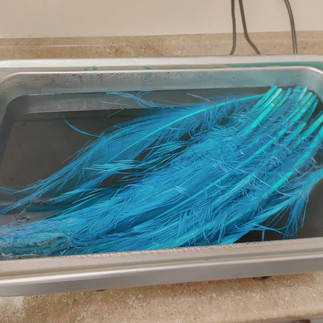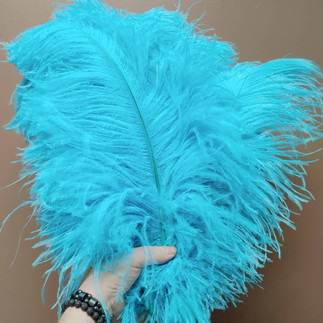The Art (and Science) of Dyeing Feathers
- store8465
- Mar 27
- 2 min read
Dyeing feathers may seem like a straightforward task—but trust us, it’s anything but. Over the years, we’ve learned that working with feathers is a delicate, often unpredictable process. And the more you learn, the more you realize how many variables can throw a wrench into your perfect color match.
First, it’s important to understand that feathers are made of protein, much like wool or silk. That means they require acid dyes to achieve vibrant, lasting color. But even with the right type of dye, getting consistent results isn’t guaranteed.
One of the biggest challenges is that every type of feather accepts dye differently. Ostrich, goose, marabou, turkey, and pheasant all have their own personalities when it comes to how they absorb color. Temperature matters too—some feathers take color better at a simmer, others prefer cooler conditions. And don’t even get us started on water quality. Hard vs. soft water can affect both the tone and saturation of your dye bath.
Another wild card? How the feathers were processed before they ever reached us. Factory treatments, oils, residues, and even the way feathers were washed can all influence how dye reacts. So even if you hit your perfect target color on, say, ostrich, the exact same dye bath might look completely different on goose or marabou. It’s part science, part magic, and always a bit of a gamble.
Drying techniques matter just as much. Stiffer feathers like turkey or pheasant often do best laid flat to air dry, while soft plumes like goose and ostrich usually need some coaxing with hot air—think blow dryers, fan setups, or even a tumble in the clothes dryer.
All of this explains why we’re cautious about taking on custom dye jobs. It’s not that we don’t want to help—it’s that we know how unpredictable the process can be. We often ask our customers to let us run a test dye first, just to see how things behave. It’s the only way to avoid surprises later.
And when you see imported feathers that are dyed perfectly and consistently? That’s the result of massive factory setups with access to stronger chemicals and more specialized equipment than we use in our small, feather-covered kitchen. They’re doing this on a commercial scale, all day, every day.
We may not have their scale or resources, but we do have a deep respect for the complexity of the craft. Feather dyeing is finicky, fascinating work—and when it goes right, it's incredibly rewarding.















Comments